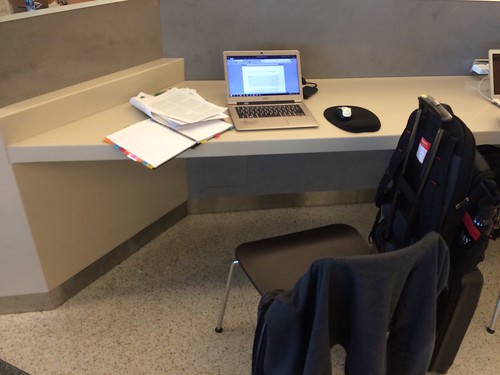One of the things I’ve been learning this 2017 has been dealing with rejection in a more constructive manner. Toward the beginning of the year 20017 I got a paper rejected from the top journal in my field and I literally shut the door of my campus office and burst into tears. This manuscript was, in my opinion, my very best in a very long time. It had received much praise across different avenues when I presented it, and I thought it was fantastic. Well, I got a rejection. We all do. In academia, it’s the norm, not the exception.
@judith_teichman @raulpacheco and as my advisor said when 1st article was rejected: welcome to the rejection club. Membership is universal.
— William D. Adler (@williamadler78) April 26, 2016
But this year, I’ve gotten a lot better at dealing with the rejected paper, but probably not in a very timely manner. A good friend of mine, Dr. Adam Wellstead says that one should literally turn around a paper within two weeks. I don’t think everyone can do this, so when I thought about what I plan to do with my papers in 2018, I figured the word was “PURPOSE”. I think it’s fundamental to plan to deal with rejected papers and revise-and-resubmits (R&Rs) quite swiftly. So this is the process I plan to follow (I already do, but this will be a more systematic approach).
FOR REJECTED PAPERS AND FOR R&Rs
1. I take 1 week without seeing the paper itself nor the reviews. THEN I generate the Drafts Review Matrix for this paper.
Reading rejection letters is painful, and even though I’m a journal editor and I have often had to write these, I’ve decided to avoid the pain for a little bit. Since I do have research assistants, I ask them to help me create my Drafts Review Matrix while I avoid the paper for a while.
2. I take the recommendations of the reviewer as noted in the rejection letter to improve the paper.
There are cases (countless, for me) where the rejection letter is absolutely useless: “your paper sucks”. Well, thank you very much, I already knew this. When I receive one of those, I simply refuse to write for that journal ever again, and to peer review for this journal too. But when the rejection letter is nicely worded and offers good feedback, I take those recommendations to improve the paper. I received three of these this year and yes, the comments WILL improve the paper, for sure.
3. I take 3 days to a week to focus on improving ONE particular paper. Unless more research/data is required.
I have realized that I can’t MEPFED with Revise-And-Resubmits (R&Rs) so I focus on ONE paper throughout a week. I make the changes that the reviewers suggested, and draft a potential R&R memorandum (obviously, when the paper is rejected, this memorandum will serve no-one, but in case a reviewer says “I think I already reviewed this piece” I can tell the editor “possibly, but HERE, I can demonstrated I made X, Y, and Z changes based on this reviewer’s feedback – and by the way, please send the revised version to a DIFFERENT reviewer because obviously this one already saw the previous version and I’m pretty sure he/she won’t want to see this new one”.
4. I reformat the paper for a different journal, and then take a morning to submit it.
This is where I ask my RAs for help. My RAs help me reformat the paper for a different journal, but since one must do the entire submission process (including writing the cumbersome cover letter), I usually save a morning to do the submission.
BUT WHAT IF I DON’T HAVE THE TIME RIGHT NOW TO DEAL WITH MY REJECTED PIECES OR R&Rs?
Like everybody else, I am often quite busy and booked, so I apply the steps above spread out over a month or two. This is the only way I can continue doing work while not getting bogged down by these rejections and R&Rs. What I suggest is to avoid what I once did: leave a paper dormant for TEN MONTHS. Not healthy, not for you, not for the journal.
I think more than anything, we need to be purposeful with how we use our time to deal with rejections and R&Rs. I find that rejections are often a matter of fit “this paper wasn’t good for this journal”. And R&Rs are opportunities to improve our papers. So, get up, dust off, and #GetYourManuscriptOut!
NOTE: If I need more data analysis, data collection or fieldwork, I prioritize this data collection, analysis or field season so that I can get the R&R out faster.


0 Responses
Stay in touch with the conversation, subscribe to the RSS feed for comments on this post.